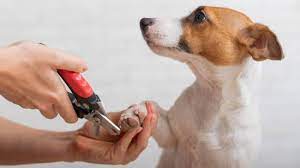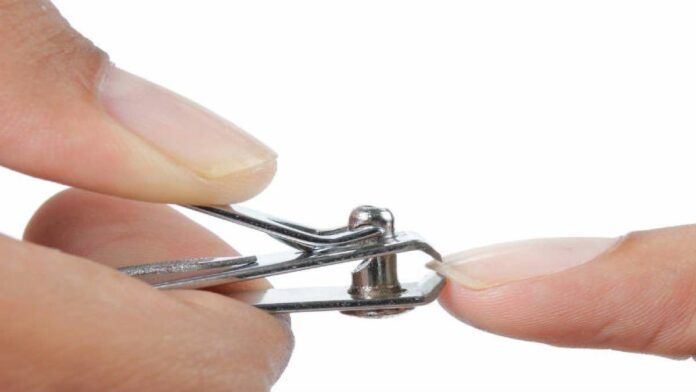This article will discuss what nail cutting and trimming are, the general techniques and methods associated with it, and some common foot diseases related to nail trimming and cutting.
Also, we will be listing out the tools necessary for this process here.
Contents
Concept of Nail Clipping
Clipping and trimming your nails is an essential but necessary self-care routine. Short, well-kept nails are not only attractive, but they are also less likely to harbour dirt and bacteria, which can contribute to infection. Furthermore, proper nail clipping techniques can aid in the prevention of common problems such as hangnails and ingrown toenails.
While nail clipping appears to be a simple process, there are a few steps you should take to ensure a healthy cut. Dermatologists prescribe the following steps for properly trimming your nails:
Make the nails softer: After a bath or shower, the perfect time to cut your nails is right afterward. If that isn’t possible, soften your nails by soaking them in lukewarm water for a few minutes.
Use the right equipment: For fingernails, use a nail clipper or nail scissors, and for toenails, use a toenail clipper. Remember to clean your equipment at least once a month. To clean your nail clippers or scissors, soak a small scrub brush in a bowl of 70 to 90 percent isopropyl alcohol, then scrub them with the brush. After that, rinse the tools in hot water and thoroughly dry them before storing them.
Split your fingernails nearly straight across the nail to trim them. Use an emery board or nail file to slightly round the corners of your nails, which will help them stay longer and avoid catching on clothes or furniture.
When trimming your toenails, cut straight across to reduce your risk of having an ingrown toenail. Since toenails grow more slowly than fingernails, you do not need to trim them as often.
A nail file or emery board can be used to smoothen out any irregular or rough edges. Since filing back and forth will weaken your nails, always file them in the same direction.

Source: Colorado Foot Institute
Keep your cuticles to yourself: Since cuticles protect the nail base, it’s crucial to avoid cutting or forcing them out. When you trim or cut your cuticles, bacteria and other germs have an easier time getting inside your body and causing an infection. When you have a nail infection, it can take a long time for it to heal.
After trimming your nails, moisturize them to keep them flexible: This is particularly important when the air is dry, as dry nails are more prone to splitting. The state of your nails is a sign of your overall health. Consult a board-certified dermatologist if you note a difference in your nails’ color, texture, or shape. While some changes are harmless, others could indicate a disease or infection, such as melanoma or a nail fungal infection.
The Value of Nail Trimming
Routine foot treatment is designed to help patients avoid severe yet avoidable issues. Ingrown nails are a common problem that sometimes gets worse as people get older.
Ingrown nails can be divided into two categories:
- Distal
- Lateral
The type of ingrown nail you’re dealing with is also determined by the location of redness and pain (or paronychia), swelling, or puss.
Ingrown nails at the distal tip are caused by excessive nail clipping, which occurs when the nail is removed, but the edge of the nail under the skin is ignored. This is where the curette enters the image.
It’s essential to check both sides of the nail for any remaining bits before rounding it down. However, avoid overusing the curette because it causes discomfort to the patient. Once you’ve finished caring for the nail, please take a quick look at it.
Broad nail plates trigger ingrown nails on the sides. People are born with these, and the condition often worsens as they age. When the nail plates are too large, the nail grows longer and cuts through the plate. If an individual has a large nail plate, cutting the distal edge down will have little impact on the ingrown nail. It will continue to be big no matter how you cut it.
Ingrown nails are highly susceptible to infection because it is impossible to sterilize this region, no matter how clean the individual is. It’s not advisable to soak your nails like this because it will just lead to infection. These oils cannot be orally consumed. They are only meant for topical or aromatherapy use. Plant chemicals (when applied topically) may react with your skin and result in blisters, acne, skin burns, and rashes. Your skin may also become sensitive to some creams and gels.
An important aspect of nail trimming and clipping is that it helps to maintain a healthy lifestyle, shorter and clean nails make it easier for workout sessions to be carried out.
INSIGHT
For Pet Owners
Pet nail trimming and clipping is an important feature of grooming. Although stressful and time consuming, this process can also be fun both you and your pets depending on how it is done. Nail trimming and cutting can be beneficial to both you and your pet as it is a sign of a responsible owner but also a sign of healthy and hygienic living condition for your pet. Neglected nails can cause pain and infection, in addition to causing damage to floors and furniture.

Importance of Pet Nail Care
- Pets with long nails are at risk of having a broken nail or experiencing a deep tear.
- Long or unkempt nails can sometimes irritate the pad foot.
- Pet nail trimming also helps to improve mobility as untrimmed nails is an obstruction to the natural and proper movement of your pets.
Nail Clipping Suggestions
- Trim regularly preferably every two weeks to make the job easier.
- When you cutting the nail, use your fingertips to separate your pets’ toes
- Ensure your dog is tired and happy by exercising it before trimming takes place.
Interesting Facts about Pets Nail Trimming and Clipping
- Using the right tool for nail care eases the stress of doing it by half.
- Dog nail trimming helps to train it.
- You get more used to your pets when you trim their nails regularly.
Tools used in Nail Cutting, Trimming and Filing Process
Clippers are one of the most popular nail-cutting tools. Clippers come in a wide range of shapes and sizes, from c-shape blades to pointed blade clippers. Double-action clippers are the most popular clippers used in foot care. These have two hinges, which gives them a technical advantage, but no clipper is ultimately better than the other. The ability to use these clippers correctly would make a difference. Whatever option you choose, keep practicing to perfect your technique.

Source: Moo.Review
Curette for the Skin: Pedicurists have been known to use this instrument. While having two scooped ends, the curette is perfect for cleaning under the nail. A double-ended curette with 2.5 mm and 3.5 mm cups is ideal for most cases.
Files: Many nurses in the United States are unaware of using this tool, despite its widespread use in Canada. And for a good reason: these files fit well on nail borders and produce excellent results while preventing ingrown nails. Files come in various shapes and coarseness and can be used for thinning and rounding.

Source: Cosmopolitan
How to File Nails
This is a three-step method; you file side to the middle, going 45 degrees on one side of the nail tip, and finally, the top of the nail. However, you shouldn’t file sides too much to avoid tears.

Avoid razors and other sharp blades
You are at work when you realize that one of your nails irritates you. You do not have a nail clipper or a scissor but it happens to have an office blade in your drawer. So you decide to cut the part of the nail that bothers you with the blade; but then you get used to it and you end up cutting all of your finger nails. Of course, your nails are no longer looking nice but perhaps they were not looking nice in the first place anyway so you do not really mind. Perhaps you have a filer as well so you can easily make them look pretty again. In any case, avoid sharp blades or even razors to cut your nails as you can damage your nails or your fingers severely. These tools can be particularly harmful if not handled properly, and in many places in the world are even prohibited. You can find relevant details about razors safety in one of our popular articles on Razor Safety History and Safety Razors in 2020.
Most Common Foot Diseases Linked to Nail Trimming and Cutting
Omega Nails : The skin in the central portion of the nail is higher in this state. This is also valid for toenails that are too thick. Bleeding is likely when sanding without considering this.
Solution: (1) Treat omega nails differently than flat nails by not wriggling the clipper under the nail tip. (2) Cut at a 45-degree angle to match the angle of the nail. (3) Take 2 mm bites, moving the hand instead of the nail.
Cutting is not an option if the nail is fully twisted into a closed position. Just use an emery board or sander to sand.
Pterygium Problem: Scar tissue in the nail matrix forms this neurovascular skin appendage. Nerves and blood vessels can be found in this skin development. It does not hurt to touch it, but cutting it is like clipping your nails too short. Hyperkeratotic tissue may grow on a pterygium, making it much more difficult to see.
Solution: Presume pterygium and use one of the techniques mentioned below to stop cutting it. To prevent a lesion, the nail above it is clipped. Since the appendage is not connected to the nail, you may sand the nail above it. Since sanding prevents cutting, it is the perfect alternative.
Closing Thoughts
General nail care for humans and animals is essential for a healthy lifestyle. We have been able to establish what nail care (nail clipping, nail trimming, nail filing) is, how to file for nails and its general importance in our lifestyle.
